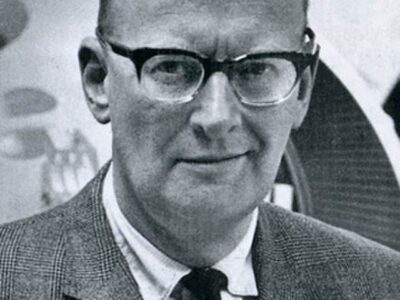(In?)sane With the Membrane
New developments in Deep Sea Desalination hold important promise for the freshwater crisis – and might require an amendment to Clarke’s Third Law.

The great speculative fiction writer Arthur C. Clarke’s Third Law reads: “Any sufficiently advanced technology is indistinguishable from magic.”
This principle came to me the other day when considering this interesting Wall Street Journal piece on Deep Sea Desalination (which we can call DSD for short). Virtually alone among environmental law professors, I am a desalination booster (which I explain below). The idea behind DSD is to place desalination machines into, well, the deep sea (i.e. not along the coast), and have the water pumped up to the surface.
DSD could conceivably present a major solution to desalination’s two major environmental problems. The first is very salty brine that destroys coastal ecosystems: “[b]ecause the process happens down so deep,” the WSJ explains, “the saltier brine byproduct is quickly dispersed by the ocean without harming aquatic plants or animals.
The second is that desalination requires a whole lot of energy. This, too, has some promise:
Instead of expending huge amounts of energy to pump seawater onto land, and then pressurize it inside a plant, why not take advantage of the ocean’s extreme natural pressure? At depth, seawater naturally wants to cross a desalination membrane, so long as the fresh water on the other side of it is being pumped to the surface. The result is a net energy savings of up to 40%.
So far, so good: an emerging and potentially useful technology that is now being test-driven by some governments around the world (and including a test site in Malibu, which I will go visit and report back on).
But I suppose what really struck me about the piece was the capsule description of the history of desalination. Tom Pankratz, who edits the weekly Water Desalination Report, told the Journal, “Desalination is the most expensive way to make water, and there’s no getting around it.” That remains true, but it is much less true than it used to be:
Around the year 2000, reverse-osmosis changed everything, says Pankratz. In this process, water is forced across a plastic membrane with holes so tiny only water molecules fit through, leaving behind salt and other impurities. This process requires about half the energy, making it a credible option for Trinidad, which in 2002 got a plant that now produces 40 million gallons of water a day, and Israel, which got one in 2005 that now produces 85 million gallons of water daily. Many more plants followed, and this is now the standard way to desalinate water.
Okay: so every changed with reverse-osmosis. Was that magic? No: The principle of reverse osmosis goes back nearly three hundred years. In the late 50’s and 60’s, the federal government invested hundreds of millions of dollars. By 1965, Sidney Loeb at (of course) UCLA and Srinivasa Sourirajan at the National Research Council of Canada, Ottawa, found techniques for making asymmetric membranes characterized by an effectively thin “skin” layer supported atop a highly porous and much thicker substrate region. John Cadotte then discovered that membranes with particularly high flux and low salt passage could be made by interfacial polymerization of m-phenylene diamine and trimesoyl chloride. Cadotte’s patent on this process was filed in 1981, quickly became bogged down in litigation and expired. (An excellent history of Reverse Osmosis can be found here at the National Academy of Engineering’s website: read it before the Regime destroys it!).
Only after all that did Reverse Osmosis become more common. In other words, Clarke’s Third Law might need a corollary: “any sufficiently advanced technology appears indistinguishable from magic.” But technological development isn’t magic: it is an intelligible process that moves step by step in a rational direction.

And that is particularly true regarding freshwater resources. I am currently reading Buzz Thompson’s wonderful 2023 book, Liquid Asset: How Business and Government Can Partner to Solve the Freshwater Crisis. Early in the book, Buzz makes an arresting observation, no less arresting because of its obviousness: “Few regions are running out of water. Instead, they are running out of inexpensive water.” Technology exists to produce more freshwater. It’s just really expensive. But if you have the basic technology, making it cheaper is something that innovation can do pretty well if we are willing to invest in it and do the work. Thus Edison’s famous quote about genius being 2 percent inspiration and 98 percent perspiration. (And he might have inflated the inspiration factor).
I am one of the few environmental law professors who is enthusiastic about desalination, not because I think it is a cure-all – far from it – but rather because I think it is far, far more likely than we will improve the technology to approach cost-effectiveness than we will improve human habits to use water more judiciously. It is easier to improve a membrane than to improve the human character.
And water is the ultimate renewable resource: we basically have the same amount of water on this planet that we did centuries or even millennia ago. It’s not like fossil fuels. So we should get to work making desalination cost-effective and make the necessary investments. DSD is part of that. It’s not magic. It just seems that way.
Reader Comments
One Reply to “(In?)sane With the Membrane”
Comments are closed.







I live in an area of the country where I have seen desalination innovation increase over the last 20 years because we support the yachting industry. I am glad to hear there is interest outside of megayacht construction.